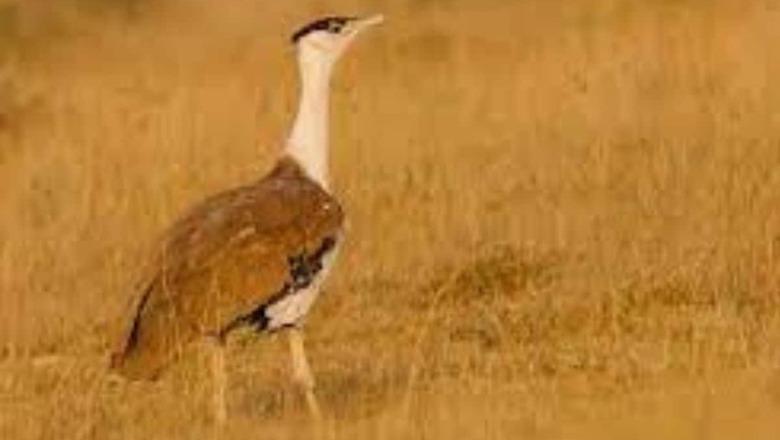
views
Nearly 44% of the migratory species accorded protection under the Bonn Convention are declining in numbers, revealed the ‘State of the World’s Migratory Species’ report launched at the opening of CMS COP14 in Samarkand, Uzbekistan on Monday. This is the first such comprehensive global assessment of migratory species.
The report was compiled in response to a decision taken at CMS COP13 in 2020, which was hosted by India in Gandhinagar. The Zoological Survey of India (ZSI) had then put the number of migratory species of India under CMS to be 457. The conference had ended with the addition of 10 migratory species, including the Asian Elephant, Jaguar and the critically-endangered Great Indian Bustard with less than 200 left worldwide, to the global wildlife agreement.
The landmark United Nations (UN) report prepared by the Convention on the Conservation of Migratory Species of Wild Animals (CMS) focusses on nearly 1,189 animal species that are listed under CMS, which include some iconic species such as sea turtles, whales and sharks, elephants, wild cats, raptors, water birds and songbirds, which travel thousands of miles across the globe every year to feed and breed.
ONE IN FIVE CMS SPECIES THREATENED WITH EXTINCTION
According to the report, more than one in five (22%) CMS-listed species are threatened with extinction. In fact, 70 CMS-listed migratory species, including the steppe eagle, Egyptian vulture and wild camel, have become more endangered over the past 30 years. Most worryingly, nearly all CMS-listed species of fish, including migratory sharks, rays and sturgeons, are facing a high risk of extinction, with their populations declining by 90% since the 1970s.
“The report, for the first time, sets out compelling evidence of the perils facing these awe-inspiring animals. It finds that migratory species are being hit hard, particularly by overexploitation and habitat loss, degradation and fragmentation,” said Inger Andersen UN Under-Secretary-General & Executive Director, UN Environment Programme.
The report also investigated how many migratory species are at risk, but not covered by the Convention, and found that 399 migratory species, mainly birds and fish, including many albatrosses and perching birds, ground sharks and stingrays, are categorised as threatened or near-threatened, but are not yet CMS-listed. However, some 14 species such as the blue and humpback whales, which were heavily hunted for oil and baleen, white-tailed sea eagle and black-faced spoonbill showed positive population trends.
OVER-EXPLOITATION, HABITAT LOSS & CLIMATE CHANGE
According to experts, over-exploitation and human activities have largely deteriorated the status of migratory species. Drastic habitat loss, degradation and fragmentation across countries are increasingly disrupting the ability of migratory species to move freely along their routes. The rising global temperatures are also shrinking habitats available to many migratory species. The changing temperatures can cause migratory species to arrive too early, too late or not at all, said experts.
Extensive use of dams in river systems has been cited as a major cause for habitat fragmentation for fresh water migratory fishes in the Indian sub-continent, which is preventing them from completing their migratory route.
The report also found that half (51%) of the key biodiversity areas identified as important for CMS-listed migratory animals do not have protected status, and 58% of the monitored sites recognized as being important for CMS-listed species are experiencing unsustainable levels of human-caused pressure.
CMS COP14 BEGINS TODAY
The release of the report marked the beginning of the week-long UN wildlife conservation conference (CMS COP14) in Samarkand, Uzbekistan where governments, wildlife organisations and scientists from across the world will discuss strategies for conservation of migratory species and their habitats. It will also be the first COP of any global environmental treaty to take place in Central Asia.
Meanwhile, India, which had hosted CMS COP14, is home to several migratory species of wildlife, including snow leopard, Amur falcons, bar headed Geese, black-necked cranes, marine turtles, dugongs and hump-backed whales. The Indian sub-continent is also part of the major bird flyway network — the Central Asian Flyway (CAF) that stretches between the Arctic and Indian Oceans, covering at least 279 populations of 182 migratory water bird species, including 29 globally threatened species.


















Comments
0 comment